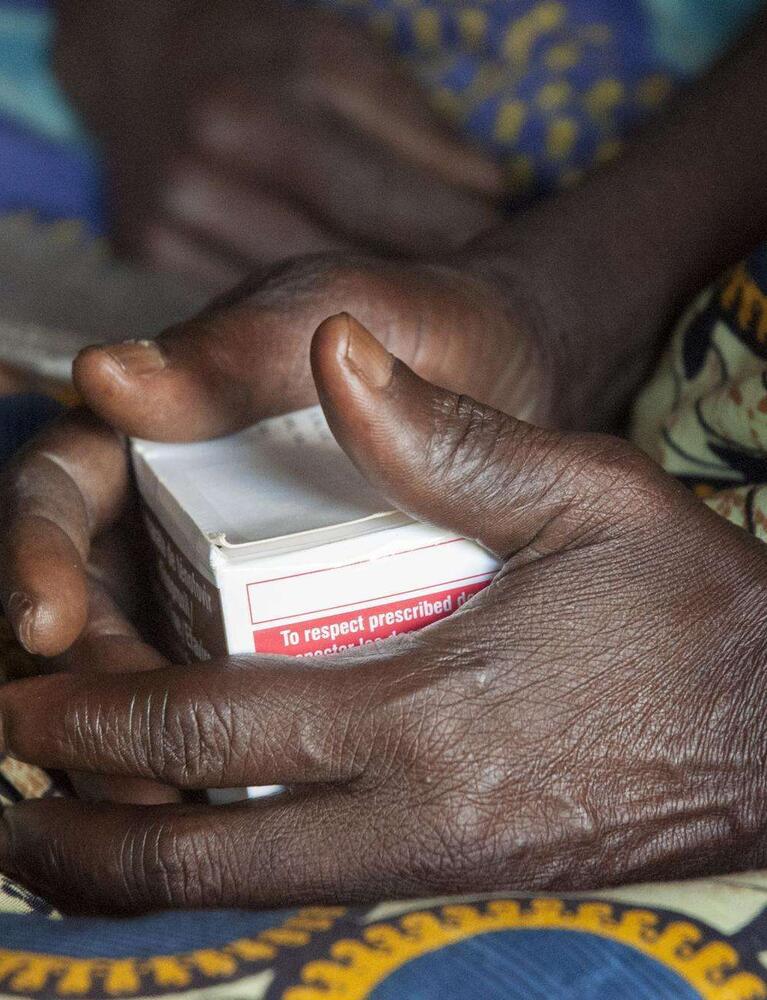The price of first and second-line antiretrovirals (ARVs) to treat HIV are falling because of increased competition among generic producers, but newer ARVs continue to be priced astronomically high, according to the annual report Untangling the Web of ARV Price Reductions, released today by the international medical humanitarian organisation Médecins Sans Frontières / Doctors Without Borders (MSF) at the International AIDS Society conference in Kuala Lumpur.
“It’s good news that the price of key HIV drugs continues to fall as more generic companies compete for the market, but the newer medicines are still priced far too high,” said Dr Jennifer Cohn, Medical Director at MSF’s Access Campaign.
“MSF and other care providers need the newer treatments for people that have exhausted all other options, but patents keep them priced beyond reach. We also need to watch carefully as newer, better medicines reach the market in coming years, as these are the drugs that we’ll quickly be needing to roll out. The price question is far from resolved.”
Price drops
With the arrival of additional quality-assured sources in the past year, the ‘best possible’ price of a WHO-recommended one-pill-a-day first-line combination (tenofovir/lamivudine/efavirenz) has fallen 19 percent since last year (from $172 to $139 per person per year), with some countries able to achieve even lower prices in large volume orders.
Likewise, as new generic competitors have emerged, the prices of two key medicines used in second-line treatment— atazanavir/ritonavir and lopinavir/ritonavir—have each fallen by 28 percent over the last year, with the most affordable second-line combination (zidovudine/lamivudine + atazanavir/ritonavir) now priced at $303 per year.
This represents a 75 percent drop in the price of second-line treatment since 2006. However, today’s lowest second-line price is still more than double the cost of first-line treatment.
Patent blocks
But for newer HIV medicines, including critical new classes of ARVs such as integrase inhibitors, generic competition is mostly blocked because of patents. As a result, these are much more expensive.
The best possible price of a possible salvage regimen for people who have failed second-line treatment (raltegravir + etravirine + darunavir + ritonavir) is $2,006 per year in the poorest countries—nearly 15 times the price of first-line treatment.
Countries that do not have access to these lowest available prices are paying many times more. For example, Thailand and Jamaica pay $4,760 and $6,570 respectively for the new drug darunavir alone; Paraguay pays $7,782 just for etravirine; and Armenia pays $13,213 just for raltegravir—just one of the three or four drugs that are needed for a full regimen.
Securing affordability
Securing the affordability of future medicines is also a priority. HIV experts highlight that new potent and well-tolerated drugs such as the integrase inhibitor dolutegravir could in the future be used in improved first- or second-line, making affordable access to these newer drugs even more urgent.
“Scaling up HIV treatment and sustaining people on treatment for life will depend on bringing the price of newer drugs down,” said Arax Bozadjian, HIV Pharmacist at MSF’s Access Campaign. “Today, there are no quality-assured generic options for the large majority of the newer HIV drugs.
“Prices in middle-income countries are also a major concern. The terms of existing voluntary licence agreements aren’t good enough, most of them don’t have terms that are public-health oriented, and most middle-income countries are excluded, which limits these countries access to much-needed regimens.”
‘Patent oppositions’
It was thanks to ‘patent oppositions’ in generics-producing India that the price of first- and second-line combinations were able to fall, as additional generic producers entered the market. With newer HIV medicines increasingly being patented in countries with significant generic production capacity, like India, it will be critical for solutions to be identified to bring prices down.
Patent applications should be opposed when they do not meet a country’s patentability requirements, as reaffirmed by the Indian Supreme Court’s decision against Novartis in April 2013. When patents prevent access, compulsory licences should be issued in the interest of public health. India issued its first compulsory licence in 2012 for a cancer drug that was deemed unaffordable, and similar moves should be taken to overcome unaffordable HIV drug prices.
“In our clinic in Mumbai, more and more patients need the newest expensive HIV drugs, but we can’t afford these prices long-term, nor can the government,” said Leena Menghaney, Manager of MSF’s Access Campaign in India.
“Countries need to tackle the problem of high drug prices head on, by making sure unwarranted patents are not granted, and by issuing compulsory licences when drugs are priced out of reach so that more affordable generic versions can be made.”
Putting HIV Treatment to the Test
A second report released today by MSF at the IAS conference, Putting HIV Treatment to the Test, looks at the price of HIV viral load tests.
Viral load testing is the gold standard for HIV treatment monitoring in developed countries, as compared with either clinical or immunological (CD4) monitoring, it can more accurately and quickly detect when people are having problems adhering to their treatment and need additional counselling, or in fact are failing their treatment. WHO’s new treatment recommendations strongly recommend the use of regular viral load monitoring in developing countries.
But price and complexity so far have hindered the roll out of these technologies in developing countries.
“The goal of all HIV treatment programmes should be for ARVs to suppress the virus so people have ‘undetectable’ levels of virus in their blood,” said Dr Cohn. “Viral load testing is the best way to keep people on their more affordable first-line combination of HIV drugs for as long as possible, and to switch only those people to newer drugs who really need it.
“With the price of second-line treatment coming down, it’s really time to start testing people’s viral load and making sure people are on treatment that works for them, instead of waiting until it’s too late and they get sick again or die.”





